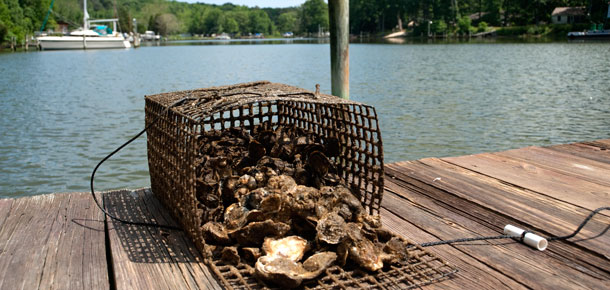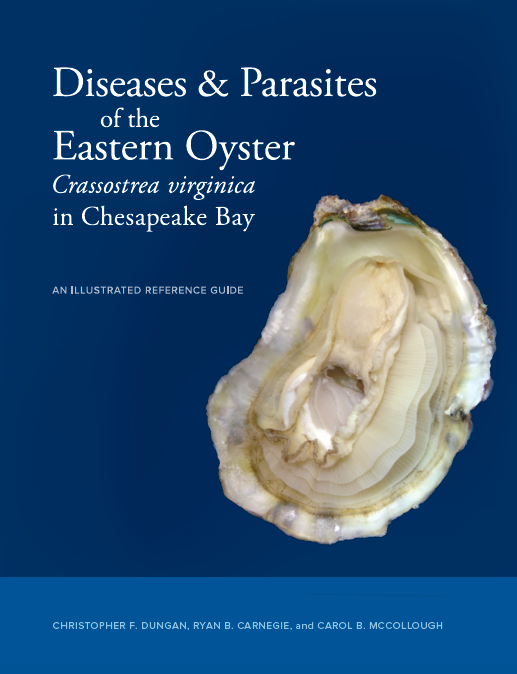Knauss legislative fellowships in Congress help build careers — and they're fun and educational. See our video and fact sheet for details.
Oyster Gardening

Around the Chesapeake Bay, gardening can mean more than planting lettuce and tomatoes in your back yard each summer. Many residents around the Bay have discovered the fun and satisfaction of cultivating their own oyster gardens.
The idea is to raise Eastern oysters — the Bay’s native oyster species — in cages or floats attached to docks. These oysters are later returned to the Bay to help replenish the once-teeming population, which has been decimated by disease, poor water quality, and overfishing.
You’ll be doing your part for oyster restoration and learning how oysters contribute to the improvement and health of the Bay’s entire ecosystem. Oysters can help to filter the Bay’s water and, if they grow on a reef, provide important habitat for other fish species. Increasing the number of oysters helps to restore the Bay’s ecosystem to one that is closer to its historic, natural state: healthy, functioning, and diverse.
Here's how one organization trains and equips new gardeners:
How Maryland Sea Grant Can Help
Maryland Sea Grant Extension has supported oyster gardening in several ways.
We and our partners developed a guide, Oyster Gardening for Restoration & Education. It offers beginners basic information on setting up and maintaining an oyster garden in the best manner given the environmental conditions for your location.
Much of the oyster seed (“spat on shell”) for oyster-gardening programs in the Bay comes from the Horn Point Oyster Hatchery, whose program director, Don Meritt, is a Maryland Sea Grant Extension specialist.
Volunteer oyster gardeners obtain the seed and raise it for a year on their docks. After that point, the oysters are mature enough to be set out on the Bay’s bottom or on artificial reefs to continue growing to adulthood. Volunteers donate the oysters to programs like the Chesapeake Bay Foundation and Marylanders Grow Oysters. These groups place the oysters in areas of the Bay designated as oyster sanctuaries. The goal is to establish self-sustaining, functioning oyster reefs.
Another goal is to re-establish an economically viable, sustainable oyster fishing industry, which, like the oyster population itself, has declined severely.
Maryland Sea Grant’s oyster gardening guide includes guidance and information about:
- Getting started
- Placing an oyster garden in the right location
- Deploying oyster seed
- Caring for oysters
- A calendar by month of key tasks
Read about oyster gardening and the people who do it in “Homegrown Oysters, Homegrown Activists,” an article in Chesapeake Quarterly, Maryland Sea Grant’s magazine.
See more of our information about the biology and restoration of oysters.
Additional Resources about Oyster Gardening
Other organizations that offer oyster gardening programs (contact one near you):
- Coastal Conservation Association of Maryland
- Magothy River Association
- West River Oyster Project
- Severn River Association
- ShoreRivers
Spat on shell and oyster larvae
- Horn Point Oyster Hatchery, University of Maryland Center for Environmental Science
- Oyster Recovery Partnership
Seed and supplies (private companies)
In Virginia





